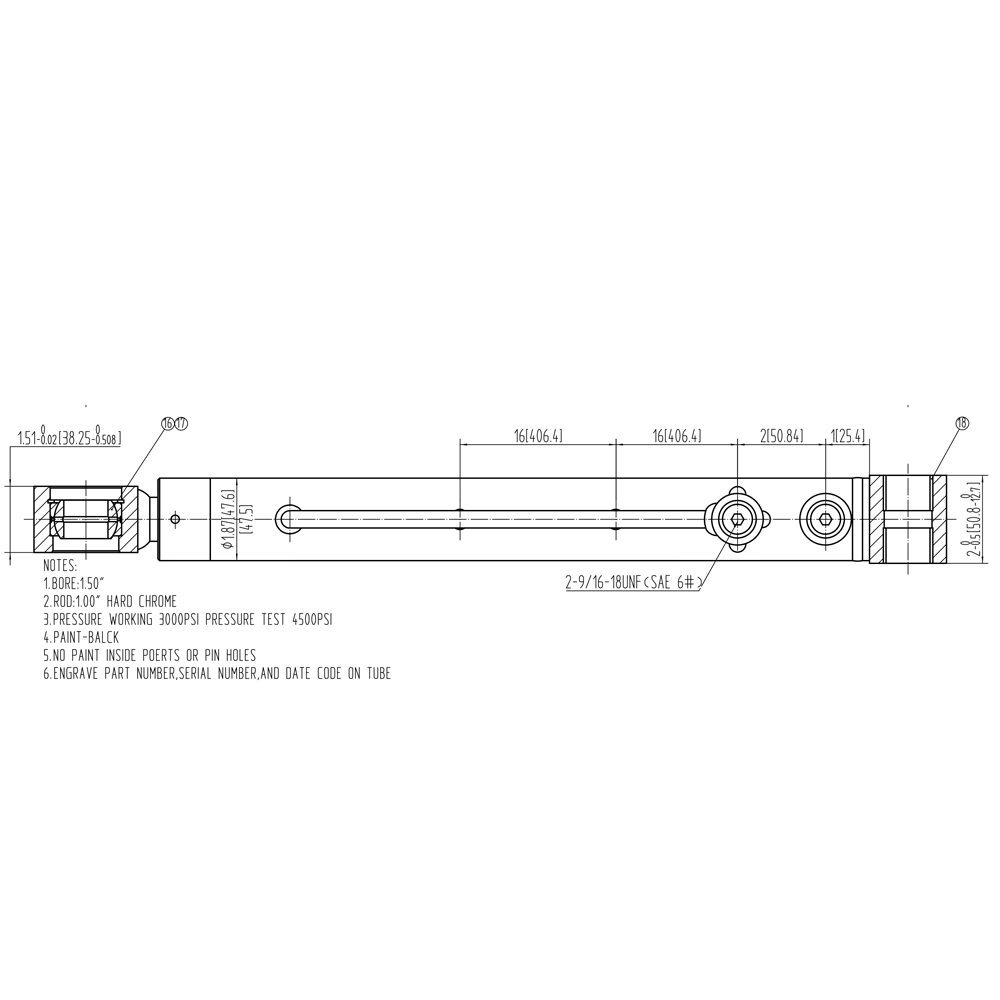Cylinder structure
The cylinder is composed of a cylinder liner, a bearing end cover, a piston rod, a hydraulic cylinder and a hydraulic seal:
1. Cylinder liner
The inner diameter of the cylinder liner means the output force of the
cylinder. The piston rod should make stable reciprocating rolling in the cylinder liner, and the surface roughness of the inner surface of the cylinder liner should be Ra0.8um. For seamless steel pipe cylinder liners, the inner surface layer should also be plated with hard chromium to reduce friction and damage, and to avoid rust. In addition to the use of medium-carbon steel pipes, the cylinder liner materials may also be high-toughness aluminum alloy profiles and red copper. Small and medium-sized cylinders use stainless steel pipes. For cylinders with magnetic induction switches or cylinders used in anti-corrosive natural environments, the cylinder liner should be made of materials such as stainless steel plates, aluminum alloy profiles or red copper.
2. Bearing end cover
The bearing end cover is equipped with inlet and exhaust pipe ports, and some are still equipped with buffer organization in the bearing end cover. The rod side bearing end cover is equipped with a sealing ring and a dust ring to avoid steam leakage from the hydraulic cylinder and to prevent external dust from penetrating into the master cylinder. The rod side bearing end cover is equipped with a guiding sleeve to improve the guiding precision of the cylinder, bear a small amount of lateral load on the hydraulic cylinder, reduce the amount of bending when the hydraulic
cylinder is extended, and increase the service life of the cylinder. Guiding sleeves are generally used for calcining oil content aluminum alloy and front drawn copper castings. In the past, malleable cast iron was commonly used in bearing end caps. Nowadays, in order to reduce the net weight and prevent rust treatment, aluminum alloy casting is often used, and copper raw materials are used for small cylinders.
3. Piston rod
The piston rod is the working pressure part in the cylinder. In order to avoid air blow-by between the left and right cavities of the piston rod, a piston rod sealing ring is equipped. The wear-resistant ring on the piston rod can improve the dominance of the cylinder, reduce the wear of the piston rod seal ring, and reduce the friction. The wear-resistant ring length should be made of polyurethane materials, polytetrafluoroethylene, braided hose anti-corrosion coatings and other raw materials. The total width of the piston rod is determined by the size of the seal ring and the length of the necessary rolling part. If the rolling part is too short, it is easy to cause initial damage and jam. The material of the piston rod is usually aluminum alloy profile and pig iron, and the piston rod of small and medium cylinders is made of copper.
4. Hydraulic
cylinder
The hydraulic cylinder is the most important force-bearing part in the cylinder. In general applications, carbon steel is coated with hard chromium on the surface, or stainless steel plate is used to resist corrosion and improve the wear resistance of the seal ring.
5. Sealing ring
The tightness of the rotating or repeated movement of the component is called dynamic tightness, and the tightness of a part of the stationary part is called packing seal.
The key connections between the
cylinder liner and the bearing end cover are as follows:
Overall type, riveting type, external thread connection type, flange type, support rod type.
6. When the cylinder is working, the piston rod must be lubricated by the welding fume in the air compression. There is also a small part of non-lubricating
cylinder.

